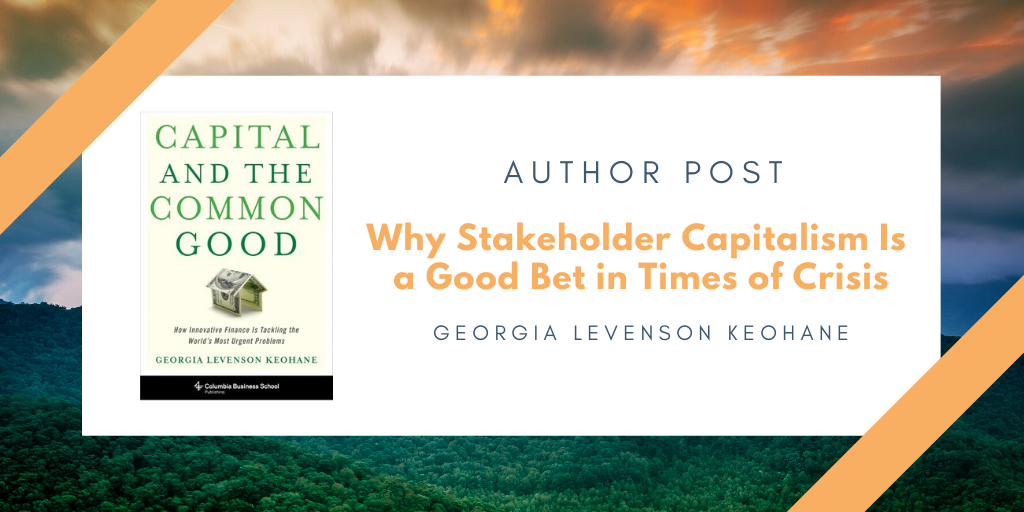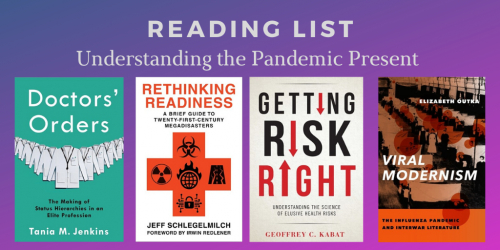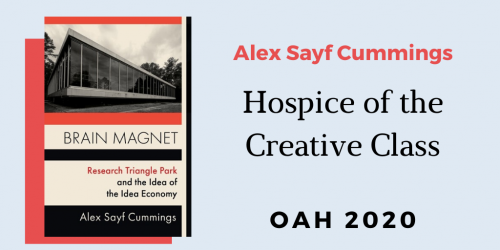Why Stakeholder Capitalism Is a Good Bet in Times of Crisis
By Georgia Levenson Keohane

“Capital and the Common Good shows we are living in a time where financial tools can expand to solve some of the world’s most vexing problems. This book is packed with information and inspiration.”
~Robert J. Shiller, Nobel Laureate in Economics
In anticipation of Earth Day on April 22, we are featuring books that discuss sustainability. This week’s selection is Capital and the Common Good: How Innovative Finance Is Tackling the World’s Most Urgent Problems, by Georgia Levenson Keohane.
Remember to enter our drawing for a chance to win a copy of this book!
• • • • • •
The World Economic Forum this week issued a set of “Stakeholder Principles in a Time of Crisis,” a roadmap for business leaders to manage the economic emergency of the COVID-19 public health crisis. Among its directives: keep employees safe, prices fair, and supply chains open—and continue to work closely with government to navigate the catastrophe.
In short, responsibility is key to resilience and essential for our collective recovery.
This call to action, presented to five hundred CEOs across the globe, harkens back to the halcyon days of January, which now seems worlds away. That was “the moment” for responsible investing. The World Economic Forum unveiled the “Davos Manifesto” for the sustainability age, drawing on the Business Roundtable’s “stakeholder capitalism” declaration that the “purpose” of a corporation was to promote broad-based prosperity. BlackRock CEO Larry Fink sent his annual letter to CEOs insisting that such purpose is the engine of long-term profitability; an estimated $23 trillion in assets were invested using some kind of environmental, social, and governance (ESG) criteria, and mainstream investors were chasing “impact.”
“We must devise ways to fashion these short-term survival instincts—commitments that fuse compassion and commerce—into enduring sustainability principles and practices.”
Will this so-called revolution in finance fizzle, or will we double down on responsibility in the broadest sense—and for the long term? Amid catastrophe, many companies, large and small, have stepped into the leadership breach. We must devise ways to fashion these short-term survival instincts—commitments that fuse compassion and commerce—into enduring sustainability principles and practices.
This moment of severe challenge is also one for clarity and confidence: a time to understand what corporate responsibility actually means, how the ESG approach differs from “impact investing” and “innovative finance,” and how each offers a way forward, for investors and society, in the days and decades ahead.
Investors like animal metaphors: bulls, bears, and the rare black swan. Many have likened COVID-19 to a “gray rhino”—a highly probable but neglected threat that will have enormous consequence. In that sense, the virus is like climate change. We ignore it at our peril.
Despite its confusing alphabet-soup acronym, this is the essence of ESG: How do we understand, plan for, and mitigate risk? How do we find and create financial value accordingly?
In normal times, ESG is simply the strategy and practice of integrating environmental, social, and governance factors into investment decisions. And in recent years, asset managers have begun to understand particularly the power of “E,” as the risks of climate change have become more apparent—we can measure things like carbon, air quality, units of electricity, water, and waste—and easier to price.
“This crisis has also laid bare existential risks to functioning markets and societies over the long term: deep economic inequality in the United States and around the globe, a fraying social safety net, and atrophying trust in our bedrock institutions in the absence of civic leadership.”
COVID-19 has brought “S” to the fore: worker health, safety, and well-being; sourcing and supply chain management; disaster preparedness, and other aspects. Similarly, “G,” which often relies on basic good governance structures, has been a test of corporate leadership. This crisis has also laid bare existential risks to functioning markets and societies over the long term: deep economic inequality in the United States and around the globe, a fraying social safety net, and atrophying trust in our bedrock institutions in the absence of civic leadership.
The data about responsible corporate leadership should encourage the companies doing the right thing by their stakeholders—employees, customers, suppliers, the local community, and the environment—to keep at it. The evidence shows that purpose pays, and that responsible management and investing outperform over the long term: companies with robust ESG practices often have a lower cost of capital, lower volatility, and fewer instances of bribery, corruption, and fraud than their less responsible peers. In a recent study, Morgan Stanley Capital International researchers found that companies with higher ESG ratings were associated with higher profitability, lower tail risk, and lower systemic risk. In turbulent markets and downturns, ESG portfolios can be highly resilient—in many cases punching above their weight. These confirm findings from Harvard Business School, Nordia Equity Research, Bank of America, and elsewhere that ESG can enhance performance and returns.
This week, a special report from the Edelman Trust Barometer and polling from Just Capital show that consumers are watching closely how companies respond to the pandemic, and corporate behavior will have a “huge impact” on their choice of goods and services. It is in everyone’s interest to sustain today’s good behavior over the long term.
“The evidence shows that purpose pays, and that responsible management and investing outperform over the long term: companies with robust ESG practices often have a lower cost of capital, lower volatility, and fewer instances of bribery, corruption, and fraud than their less responsible peers.”
The year also opened with a roar for impact investing. Different from ESG, which is an investment approach that can be applied across companies, industries, and asset classes, impact investments are made with the intention to generate positive, measurable social and environmental impact alongside a financial return.
Although impact investing started life in mission-driven sectors like philanthropy, it has gained a foothold in the commercial markets for a number of reasons underlying the larger enthusiasm for stakeholder capitalism, including the $30 trillion intergenerational wealth transfer to millennials, more than half of whom are attuned to the social responsibility of their investments; the greater economic and financial clout of women, who, in aggregate, look to align investing with giving goals; consumers willing to pay for goods and services produced in demonstrably responsible ways; employees who expect companies to play a more active role in addressing social and environmental challenges; and corporations and their investors responding to these trends.
This surge of interest has translated into a proliferation of investment offerings that purport to generate positive social or environmental impact—or at least avoid harm—while also delivering risk-adjusted market-rate returns. By some estimates there are today close to $500 billion in assets under management that could be classified as “impact.”
This flurry of activity has also led to confusion in the marketplace; definitions of “impact” vary widely, and concerns about froth and greenwashing abound. This crisis moment may well offer a revealing test of what capital is truly mission driven when it matters most.
Consider The Social Entrepreneur’s Fund (TSEF), an early stage venture fund that uses private capital to address income inequality. TSEF invests primarily in technology and software-enabled companies that address problems facing low-income communities, for example by reducing the cost of servicing low-income loans or the high fees of sending remittances, or making affordable healthcare accessible and the enrollment process in government social services navigable. Many of the companies in its portfolio achieve social impact and strong financial returns through small data insights—those that come through regular and trusted interactions of poor people often overlooked in the marketplace.
“This crisis moment may well offer a revealing test of what capital is truly mission driven when it matters most.”
Not surprisingly, many of the companies in the TSEF portfolio have stepped up in the coronavirus crisis. Aunt Bertha, for example, offers one of the largest networks of searchable social services in the United States, indexed by ZIP code. TSEF was its first investor in 2015. Last year, the company raised its series C round, at a valuation many multiples larger than TSEF’s original investment. In recent weeks, the company launched https://findhelp.org in response to the pandemic. With over three million users, the site offers links and referrals to food assistance, help with bill payment, access to childcare, and resources. Aunt Bertha has repurposed its data team to index emergency food and financial assistance programs across the country. This is what true impact investing looks like.
If we think about innovative finance not as feats of financial engineering but as creative ways to finance and pay for unmet and urgent needs, this current crisis is replete with opportunity to deploy capital for the common good. Economic recovery for individuals, small and large businesses, and society at large will require human and financial capital and ingenuity, and innovative public-private partnerships. In other crises, we have seen these emerge at scale—financing facilities for pandemics, drought, vaccines, and a range of other natural and manmade disasters.
Although it is very early days, much of this is already taking place at the very local level, in communities throughout the country, and across the world. In New York City, the national epicenter of the coronavirus, emergency grant and loan funds for small businesses and nonprofits have emerged to stabilize a city under siege, and mission-driven fintech providers are partnering with nonprofit service providers—like GiveDirectly and Propel—to get emergency cash assistance to those in severe need. This kind of innovation is occurring across the country: a glimmer of hope, and the critical first steps of our collective recovery.








